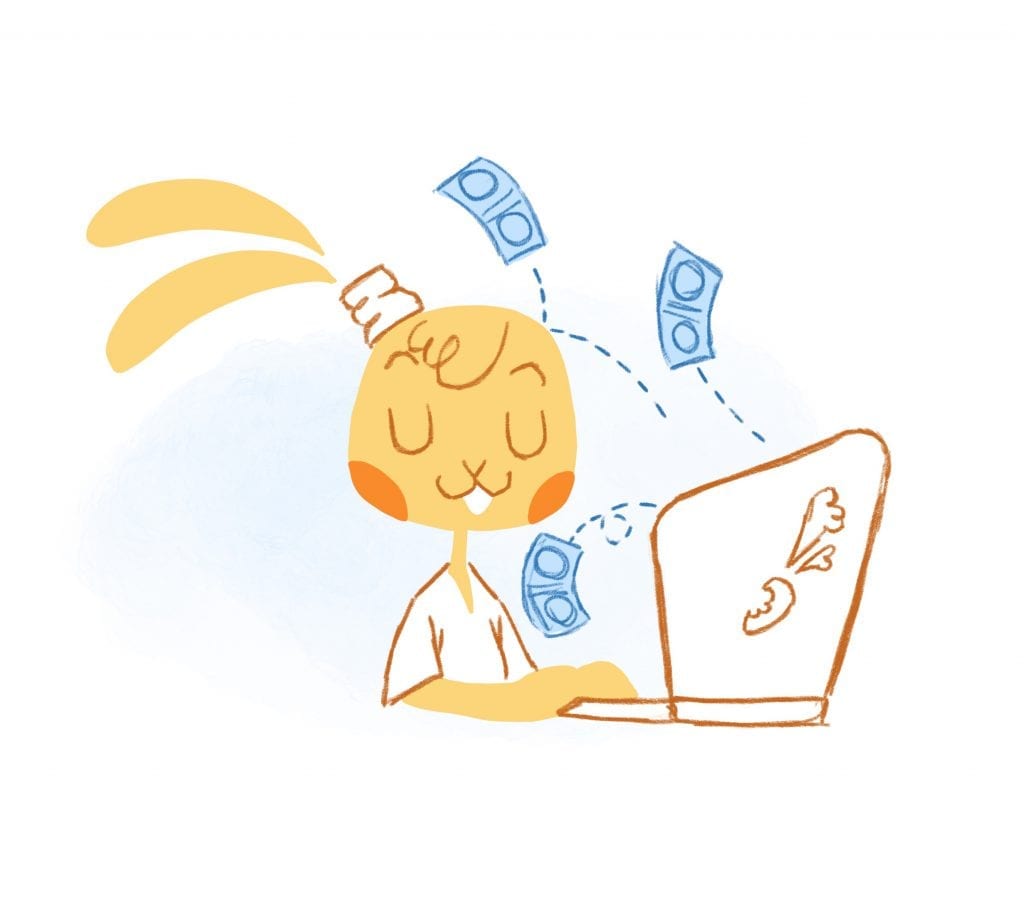

Americans are more debt-ridden than ever, with around 80 percent of Americans currently carrying debt. While some of this is tied up in mortgages or medical debt, much of it also stems from student loans and credit cards. In fact, the average Gen Xer carries more than $8,000 in credit card debt, while the average Millennial is saddled with nearly $5,000.
And this debt doesn’t just follow us around when we’re alive. Seventy-three percent of Americans died with debt in 2016, and the average debt load was near $62,000. That’s no small chunk of change, and it means people are hindered from doing everything they want to do while they’re alive.
Debt can specifically be a big hindrance to entrepreneurs looking to start or expand businesses. Qualifying for a traditional bank loan to fund a small business is notoriously difficult; in fact, only 8 percent of startups use bank loans for financing. People looking to launch or grow their ventures instead need to educate themselves on their options.
What’s the Big Deal?
Student loan debt is on the rise, which influences graduates’ job choices and results in fewer would-be entrepreneurs taking the leap. With the average debt level hovering just above $30,000, it’s hard for young entrepreneurs to consider taking on more debt.
Worse, a big student debt load may actually make it harder for them to qualify for funding — Millennials with student debt are having a harder time reaching financial milestones than earlier generations because of their diminished credit scores. While the national average credit score is 667, Millennials’ average sits at 625. And the magic line distinguishing bad credit from good is 629, meaning these young entrepreneurs are viewed by traditional lending institutions as high-risk bets with bad credit.
While old-school lenders may not be motivated to invest in these fledgling entrepreneurs, the economy needs them: They create jobs, bring opportunities to small and rural towns, and develop innovations that propel industries forward. Because of this, other financing options have emerged to provide funding for businesses with the potential to make a real impact.
Assessing the Options
While big bank loans were once viewed as the standard avenue for funding, the digital banking landscape has created new options and made existing options more accessible. The first step, however, is for entrepreneurs to determine how much money they need and why.
Business owners borrow for all sorts of reasons, from operating expenses to marketing campaigns. Knowing how much these efforts will cost — and how much they’ll take from existing projects and workflows — is important for ensuring the debt load is appropriate. “It’s smart to make sure your business doesn’t take on too much debt,” says Daniel Wesley, the founder of Creditloan.com, a site dedicated to educating on personal finance and money management. “The other side of the problem is when a business doesn’t borrow enough.”
Wesley has seen entrepreneurs both max out their possible loan amounts and borrow very tight amounts. Each has a downside. Those who’ve maxed out may have trouble getting loans in the future, and those who didn’t borrow enough can have cash flow problems that affect the rest of the business. He says business owners should budget for up to an additional 15 percent of the loan cost to be on the safe side.
The second step is for business owners to determine which type of financing is best for them.
- Credit cards: Those with personal credit card debt may cringe, but business credit cards are a good fit for short-term financing. Many have high interest rates, but they also frequently come with 0 percent interest for the initial six- or 12-month period. If a business owner needs cash in that time period but can pay it back before interest kicks in, it’s essentially an interest-free loan. Add in rewards programs, including cash back, and some entrepreneurs can make money off the financing they needed temporarily.
- Lines of credit: Lines of credit are revolving, meaning entrepreneurs can borrow what they need, pay it off, and see their line of credit replenished to be used again. Interest is only charged on the amount borrowed, not on the amount approved. These lines of credit are typically unsecured, which prevents business owners from having to put up collateral, such as product inventory or real estate.
- Working capital loans: These loans are intended to help a small business get through a cash crunch, lasting as short as a month or as long as a year. This is a good option for a startup that needs to finance a new product line prior to release or fulfill a large order prior to payment. Such loans are intended solely for operational use, not for acquiring assets or making investments.
- Small business loans: These can take many forms, from online loans to Small Business Administration loans. Entrepreneurs need to consider the loan terms, repayment schedule, and collateral needed to secure these types of loans. Online loans, for example, can get small business owners same-day approval, while SBA loans have lower interest rates than most other options.
- Invoice factoring: For those wanting to avoid debt altogether, invoice factoring — selling a business’s invoices at a discounted rate to a factoring company — may be an option. In this scenario, the business receives a lump sum payment from the factoring company, which is paid by customers when they fork over the money they owe. Invoice factoring doesn’t require collateral and can allow companies to keep long-term customers on longer payment periods.
Entrepreneurs have to assess their options to determine which type of financing is best for their situation. If their cash flow is strong but they need financing to pay for a big equipment investment, a small business loan may be the best option. A business that doesn’t want to put up any collateral may opt for a line of credit instead.
As these options show, however, bad credit, poor past budgeting, and debt don’t have to prevent entrepreneurs from building their businesses. With an open mind, a strong business plan, and market demand, business financing is always a possibility — it just may take a different form than many expect.











Max Palmer
I'm Max, and I love helping businesses we work with expand their businesses online. Growth potential is what we strive for! I help with press, productivity and overall business needs for business owners.